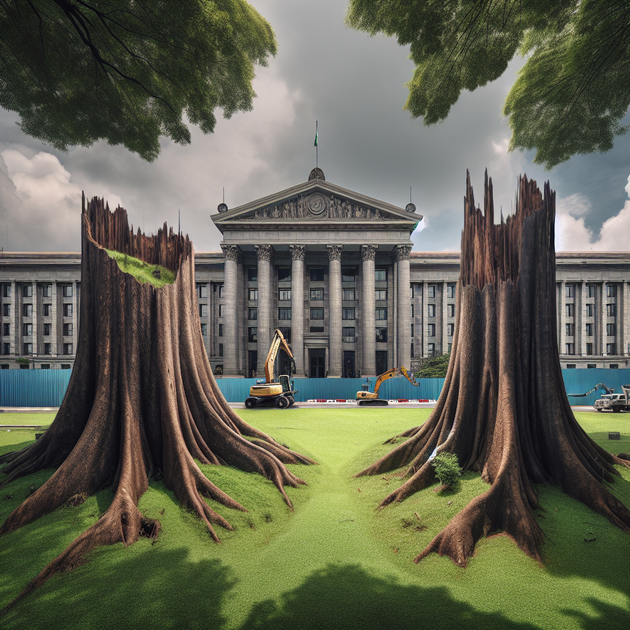Imagine two 80-year-old trees—older than most living Americans—standing right outside the most famous house in the United States. Now imagine those same trees vanished overnight in September 2025, with no photos or videos surfacing anywhere. In an era when nearly everything gets documented on smartphones or surveillance cameras, how did such a major change at the White House go completely unrecorded?
The Mystery of Missing Tree Removal Footage
The White House trees that stood for decades became silent witnesses to American history. Their sudden disappearance raised eyebrows not only because of their age but also because there’s not a single widely-shared image or video of them being cut down. Usually, when something changes at a site as iconic as this—especially outdoors and in broad daylight—someone notices.
The lack of visual evidence has led to speculation on forums and news sites alike. Some suggest it’s about security; others wonder if it was simply a matter of timing and access. But before jumping to conclusions, let’s dig into some possible explanations.
Why Don’t We Have Photos or Videos?
- Restricted Access: The area around the White House is heavily secured. Even though tourists flock to Pennsylvania Avenue daily, much of the grounds are off-limits to anyone without clearance.
- Scheduled During Low Traffic: Maintenance crews may have chosen early morning or late-night hours when foot traffic and media presence are minimal.
- No-Fly Zone: The airspace above and around the White House is tightly controlled (FAA info). So drones and helicopters can’t easily capture overhead footage.
- Media Embargo: Sometimes, certain routine maintenance activities aren’t deemed newsworthy enough for press releases—unless there’s a special reason like disease prevention or storm damage.
- Lack of Interest: Not every change makes headlines unless someone tips off reporters or shares images on social media. If tree removal was quick and uneventful, it might’ve slipped through unnoticed.
A Long History of Changing Landscapes
This isn’t the first time trees have disappeared from famous grounds. The White House landscape has seen plenty of changes over its two centuries—from new plantings to removals due to disease or construction needs. Even President Andrew Jackson once planted magnolias that became iconic until they too had to be removed (NY Times report). Often these changes happen quietly unless there’s a symbolic event attached.
An Anecdote from Local Residents
A few years back, a longtime Washington DC resident shared how they noticed landscapers working near Lafayette Park early one fall morning. Curious but unable to get close due to barricades and security staff, they watched from afar as trucks came and went quickly—leaving little trace by sunrise except fresh mulch where a large oak once stood. It was only later they learned from local news that an old tree had been removed for safety reasons.
The Balance Between Security and Transparency
The removal of these White House trees, while seemingly mundane, actually highlights how much public access is shaped by security concerns. The Secret Service and National Park Service often coordinate on such matters (NPS official site). Safety comes first—both for people and property—so work like this typically happens under wraps.
If you’re curious about what gets recorded at federal landmarks or want more transparency about grounds changes, you can check out publicly available logs via requests through the Freedom of Information Act (FOIA). Still, not every tree cutting makes it into an official press release unless there’s something truly historic about it.
Final Thoughts—and Your Take?
The mystery around those missing photos and videos probably comes down to a mix of tight security measures and careful scheduling rather than any grand conspiracy. Sometimes even big changes at iconic places can slip by quietly when most eyes are focused elsewhere.
If you were walking past the White House that week in September 2025, would you have snapped a photo—or would you have missed the change altogether? And do you think all updates to national landmarks should be openly documented?

Leave a Reply